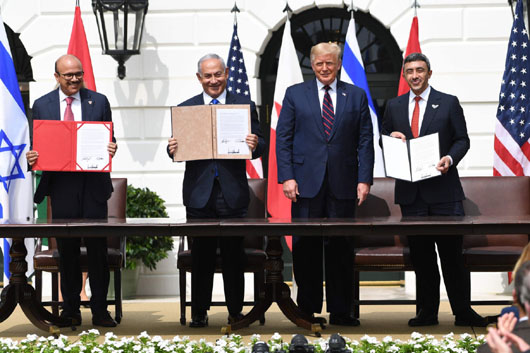FPI / October 28, 2020
Amid a flurry of activity in which U.S. President Donald Trump has brokered peace deals between Israel and the United Arab Emirates, Bahrain, and Sudan, calculations are being made in Arab capitals regarding the normalization of ties with Israel.

The leadership of Arab nations are asking if they should normalize now or wait until after the U.S. presidential election on Nov. 3.
In the case of the UAE, normalizing with Trump still in office led to a lucrative arms deals, and in the case of Sudan, being taken off the terror list and financial assistance.
The UAE, Bahrain and Sudan all decided to move now to lock in the deal, and there is speculation that there may be one or even more countries to join before Trump’s first term ends on Jan. 20.
“These countries know what they will receive from the Trump administration; what they may get from a future Biden administration is anyone’s guess,” Herb Keinon noted in an Aug. 26 analysis for the Jerusalem Post.
Israeli Prime Minister Benjamin Netanyahu said that, by locking the deal in now, the UAE, Bahrain and Sudan are changing the Middle East map.
By so doing, “it is fair to say that at least some elements of Trump’s Middle East peace plan, the so-called ‘Deal of the Century,’ are becoming facts on the ground, regardless of who wins” the Nov. 3 election, Keinon wrote.
Such calculations are not new.
On Sept. 14, 2016, shortly before the last U.S. presidential election, Israel and the U.S. signed a Memorandum of Understanding that would provide Israel with $38 billion in military aid over the next decade.
Full Text . . . Current Edition . . . . Subscription Information
FPI, Free Press International
